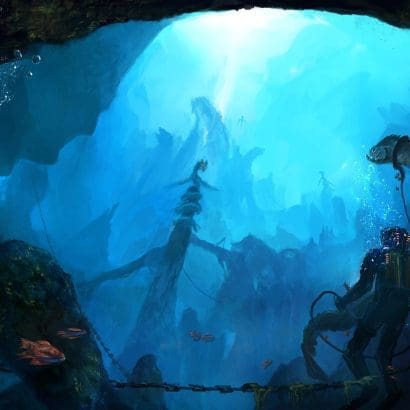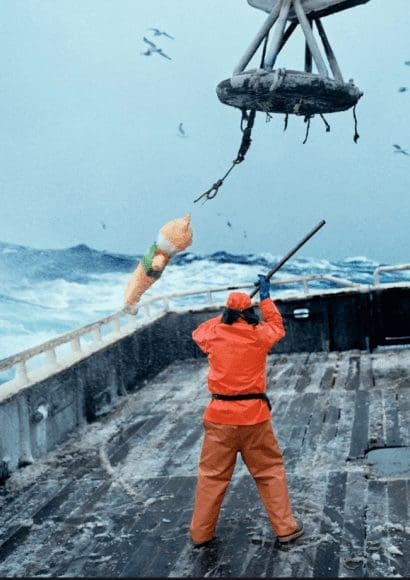
Have you ever wondered about the special areas in the ocean that help protect fish and sea creatures? These special places are called Fishery Exclusion Zones, and they play a big role in keeping our oceans safe and healthy. In this article, we’re going to explore what Fishery Exclusion Zones are and why they are so important for the animals that live in the sea. So, let’s dive in and discover the amazing world of marine conservation!
Contents
Exploring Fishery Exclusion Zones: What Are They?🐟
When it comes to taking care of our oceans, one important thing we need to understand is Fishery Exclusion Zones. But what are they exactly? Let’s dive into this fascinating world of marine protection and explore what these zones are all about.
Defining Fishery Exclusion Zones: What Do They Mean?
Fishery Exclusion Zones, often called FEZs for short, are like special safe havens in the ocean. Just like how we have our own safe spaces at home or in school, sea creatures need their safe spaces too. These zones are areas in the ocean where fishing activities are restricted or even completely stopped. This means that fishermen can’t catch fish or other sea animals there.
A Look Back in Time: Historical Background and Development
To understand why Fishery Exclusion Zones are so important, let’s take a journey back in time. These zones were created because we realized that our oceans needed protection. Imagine a time when people caught fish wherever they wanted without rules. This led to problems because some areas of the ocean were getting too empty of fish. Fishermen needed to find new places to fish, and it wasn’t good for the fish population.
So, to make sure we always have fish to enjoy, countries around the world decided to create Fishery Exclusion Zones. It’s like telling everyone, “Hey, in these special places, we won’t fish for a while so that fish and sea creatures can grow and have babies in peace.”
Why Do We Have Fishery Exclusion Zones?
Now, you might wonder why we need these zones. The main goal is to help fish and other marine animals. Think of it like giving them a safe nursery to grow up in. When fish have a safe space to live and grow, they can have lots of fishy babies. This keeps the ocean full of fish for fishermen to catch in the future. So, one of the main purposes of Fishery Exclusion Zones is to make sure we have enough fish to eat without hurting the ocean.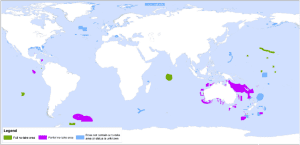
Another reason is to protect the homes of sea creatures. Some parts of the ocean are like underwater neighborhoods, and just like we want our homes to be safe, these zones help protect the special homes of many animals. It’s like having a “Do Not Disturb” sign for the ocean’s apartments and houses.
The Wonderful Benefits of Fishery Exclusion Zones:🐟
Fishery Exclusion Zones (FEZs) may sound like a mouthful, but their importance in the ocean world is as clear as a sunny day at the beach. These zones offer a sea of benefits for marine life and ocean lovers. Let’s dive into these fantastic advantages that make our oceans healthier and happier.
Safeguarding Marine Biodiversity: A Home for All
Imagine if your neighborhood was a place where everyone looked different, with colorful houses and unique gardens. Well, that’s what the ocean is like! It’s full of diverse creatures, from tiny fish to gigantic whales. Fishery Exclusion Zones are like a big, open playground for all these marine animals. They give species the space they need to thrive and grow without any worries. This means we can enjoy the amazing variety of life in the ocean for generations to come.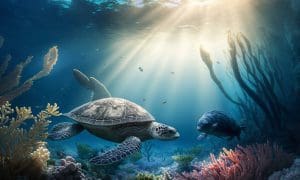
Boosting the Marine Family: More Fish in the Sea
Fish have families too! Fishery Exclusion Zones are like nurseries where fish families can grow without being disturbed. When baby fish have a safe place to live, they grow up to be big, strong adults. This is super important because it means more fish for us to enjoy. It’s like making sure there are enough cookies in the jar for everyone.
Guarding Delicate Ecosystems: Nature’s Masterpieces
Picture the ocean as a giant puzzle, with every piece fitting perfectly. This puzzle is made up of delicate ecosystems that house an incredible array of life. Some areas in the ocean are extra sensitive, like a delicate glass sculpture. Fishery Exclusion Zones act as protective barriers, making sure these ecosystems stay intact and safe from harm. It’s like having a superhero shield for nature’s masterpieces.
Sustaining Fishing for Future Generations: Eco-Friendly Fishing
Fishery Exclusion Zones play a crucial role in ensuring the sea stays full of fish for fishermen. By letting fish grow and have babies without interference, these zones are like a fish bank. This means fishermen can catch fish outside the zones without worrying about running out of fish to catch. It’s a win-win situation that keeps both ocean lovers and fishermen happy.
In a nutshell, Fishery Exclusion Zones are like a big hug from the ocean to all its creatures. They protect the marine neighborhood, give fish families a safe space to grow, and help keep our oceans full of life. These zones are true ocean lovers, making sure that we can continue to enjoy the beauty of the sea for many years to come.
Successful Examples of Fishery Exclusion Zones.🐟
Fishery Exclusion Zones aren’t just a brilliant idea on paper – they’re making a real difference in oceans all around the world. Let’s dive into some exciting examples of these zones and see the incredible outcomes they’ve achieved for both marine life and sustainable fishing.
1. Palau’s Pristine Paradise (Pacific Ocean):
Imagine a place where the ocean is as clear as crystal, teeming with vibrant fish, sharks, and sea turtles. That’s exactly what Palau, an island nation in the Pacific Ocean, has created with its Fishery Exclusion Zones. These zones act like underwater nature reserves, where fishing is limited. The result? An explosion of marine life! Palau’s pristine paradise showcases the magic of these zones, with divers and snorkelers from around the globe witnessing the beauty of unspoiled oceans.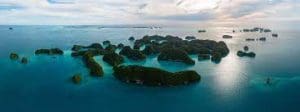
2. Chumbe Island Coral Park (Tanzania, Africa):
Off the coast of Tanzania, in East Africa, lies Chumbe Island Coral Park. It’s like a haven for coral reefs and fish. The Fishery Exclusion Zone around Chumbe Island has allowed coral reefs to recover and grow, creating a spectacular underwater world. This success story not only protects the marine environment but also promotes eco-tourism, attracting visitors eager to witness the wonders of a thriving coral reef.
3. Channel Islands (California, USA):
The Channel Islands, off the coast of California, are another shining example of Fishery Exclusion Zones at work. These zones were established to protect kelp forests, home to a wide range of marine life. By giving the ocean’s kelp gardens a break from fishing, the ecosystem has flourished. Sea otters, sea lions, and an array of fish species now thrive, showcasing the positive impact of these zones in a location accessible to many.
4. The Great Barrier Reef Marine Park (Australia):
One of the most famous examples of Fishery Exclusion Zones is found in Australia’s Great Barrier Reef Marine Park. This immense protected area ensures that this natural wonder remains healthy and vibrant. By restricting fishing in certain zones, the park helps conserve the biodiversity of the reef, safeguarding thousands of species. Tourists from all over the world flock to witness this underwater wonderland.
Achieving Conservation and Sustainable Fishing: The Bottom Line
In these real-world examples, Fishery Exclusion Zones have shown us how conservation and sustainable fishing can go hand in hand. They have breathed new life into the oceans, protecting fragile ecosystems, and supporting local economies through eco-tourism. These success stories serve as a shining example of how we can take care of our precious marine environments while ensuring there are always enough fish to enjoy.
Challenges and Controversies.🐟
Fishery Exclusion Zones (FEZs) are like superheroes of the ocean, but even superheroes face challenges and dilemmas. In this section, we’ll explore the obstacles that these zones encounter, the conflicts that can arise between marine conservation and the fishing industry, and the ingenious solutions to tackle these controversies.
Obstacles on the Horizon:
Just like a ship sailing through rough waters, Fishery Exclusion Zones can face their share of challenges. One significant issue is illegal fishing. Some people might try to sneak into these protected areas and catch fish secretly. This not only threatens marine life but also undermines the purpose of the zones. Imagine having a rule at school, and some kids don’t follow it; it can cause problems for everyone.
Another obstacle is the vastness of the ocean. Some areas are so big that it’s hard for authorities to patrol and make sure people follow the rules. Think of it like a giant playground where you need teachers to keep an eye on all the kids, but it’s an enormous playground!
Clashing Interests: Conservation vs. Fishing
A big challenge is when the goals of Fishery Exclusion Zones clash with the interests of the fishing industry. Imagine your favorite game being canceled because you need to share the field with a gardening club. In a similar way, some fishermen might feel that these zones limit their access to fish, making it harder for them to catch what they need.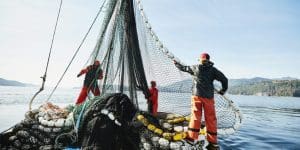
This can lead to disagreements and debates. Some people say, “We need to protect the ocean!” while others argue, “We need to catch fish to make a living!” Balancing these interests is like finding a fair way to share toys with your friends.
Charting a Course to Solutions: Finding Common Ground
The good news is that there are ways to address these challenges and controversies. One approach is using technology, like satellite monitoring, to keep an eye on Fishery Exclusion Zones. It’s like having a magical map that shows where everyone is in the playground. This helps catch those who break the rules and ensures that the zones are well-protected.
Another solution is involving everyone in the conversation. Imagine you and your friends deciding on the rules for your game together. Similarly, involving fishermen, scientists, and conservationists in discussions can lead to agreements that consider everyone’s needs. It’s like finding a way for both the game enthusiasts and the gardening club to enjoy the field.
So, while Fishery Exclusion Zones face challenges and controversies, they also offer opportunities for creative solutions. With the right tools, teamwork, and understanding, we can continue to protect our oceans and ensure there are enough fish to enjoy. It’s like sailing together on the same boat towards a future where both marine life and the fishing industry can thrive. In the next section, we’ll explore the global significance of these zones and how they connect to international agreements. Keep riding the waves of knowledge!
Role of Fishery Exclusion Zones in Global Conservation🐟
Fishery Exclusion Zones (FEZs) aren’t just superheroes for the oceans; they also play a crucial role in global conservation. In this section, we’ll explore how these zones help the planet and their connection to international agreements. So, let’s embark on this global adventure!
Contributing to Worldwide Conservation Goals:
Our world is like a giant jigsaw puzzle, and every piece needs to fit perfectly for it to work. Fishery Exclusion Zones are essential pieces in this puzzle. They support worldwide conservation goals by safeguarding marine ecosystems. It’s like making sure all the puzzle pieces are safe and sound. When marine life thrives in these zones, it has a positive ripple effect on the entire ocean.
For example, the United Nations set up a special list of goals called the Sustainable Development Goals (SDGs), which are like big dreams to make the world a better place. Fishery Exclusion Zones directly contribute to SDG 14, which focuses on Life Below Water. These zones help protect the diversity of ocean life, reduce pollution, and promote sustainable fishing, making the world’s oceans healthier and happier.
A Global Team Effort: International Agreements and Conventions:
Just like in your favorite team sport, working together is the key to success. Fishery Exclusion Zones are not just local rules; they’re part of a global team effort to protect our oceans. Many countries and organizations around the world have agreed to follow specific rules about the ocean through international agreements and conventions.
One of the most important agreements is the United Nations Convention on the Law of the Sea (UNCLOS). It’s like the rulebook for the whole ocean! UNCLOS helps countries decide how to use the ocean while making sure it’s protected. Fishery Exclusion Zones fit right into these rules by creating safe spaces for marine life.
The Big Picture: Our Blue Planet’s Protectors:
In the grand picture of our blue planet, Fishery Exclusion Zones are like the guardians of the underwater world. They don’t just protect a piece of the ocean; they contribute to the health and happiness of the entire planet. These zones are the bridge between local efforts and global conservation, ensuring that our oceans remain vibrant and full of life.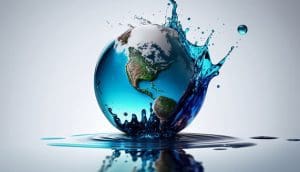
The Future of Fishery Exclusion Zones🐟
As we wrap up our journey into the world of Fishery Exclusion Zones (FEZs), it’s time to set our sights on the horizon and explore what lies ahead for these ocean protectors. In this section, we’ll peek into the future, uncover exciting trends, technological innovations, and discover how these zones can become even more effective. Let’s embark on our final leg of this ocean adventure!
Future Trends and Prospects:
The future of Fishery Exclusion Zones is looking promising. More and more countries are recognizing the importance of these zones for the health of our oceans. There’s a growing trend toward creating new zones and expanding existing ones. It’s like making your favorite game even bigger and more exciting!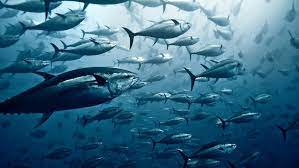
One exciting prospect is that these zones may become even more interconnected. Think of it like connecting all the puzzle pieces in the world’s ocean, creating a massive safe haven for marine life. This could lead to a global network of protection, ensuring the conservation of ocean ecosystems on a grand scale.
Technological Marvels for Management and Control:
Just as technology keeps improving your video games, it’s also playing a significant role in managing and controlling Fishery Exclusion Zones. Scientists and conservationists are using advanced tools like satellite tracking and underwater robots to keep a watchful eye on these zones. It’s like having a guardian robot in the ocean to make sure everything stays safe.
Innovations in tracking and monitoring not only help protect the zones from illegal fishing but also provide valuable data for scientific research. This information can lead to better decision-making and more effective management of the zones, ensuring they fulfill their conservation goals.
Recommendations for Expansion and Enhancement:
To make Fishery Exclusion Zones even more effective, there are a few key recommendations:
- Education and Awareness: Creating programs to educate people about the importance of these zones is crucial. When everyone understands why they’re essential, it becomes easier to support their expansion and maintenance.
- Community Engagement: Involving local communities in the management of these zones can lead to better cooperation and more successful outcomes. It’s like having a big team of ocean protectors working together.
- Flexible Management: Being open to adjusting the rules of the zones based on scientific findings and changing environmental conditions. This flexibility ensures that the zones remain effective over time.

